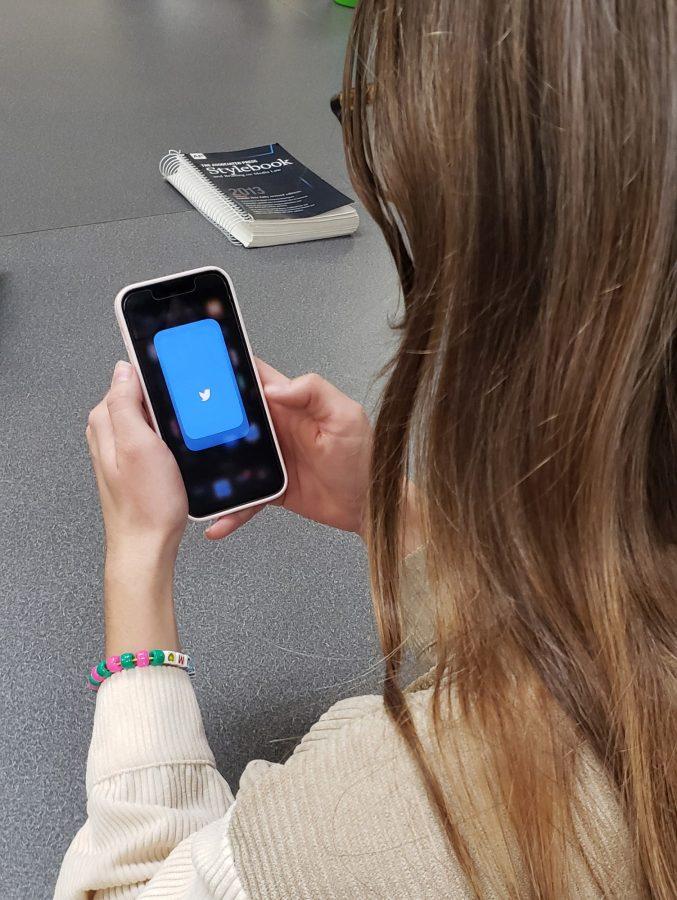“This is beat. I’m going to find the baddest chick here and take her home.” — a real thing I heard a man say in a dying bar at the end of a long Saturday night.
I was shocked at how unfazed I was by this comment. As a high schooler, I expected that most college students experience a sort of wildly promiscuous sexual awakening. Hooking up was something to look forward to, right?
Ever since I was a freshman, something about the University of Arizona’s party scene has always struck me as sexually charged. From frat parties to bar crawls, getting your rocks off seemed like a lot of students’ end-goal. I mean, there’s a reason Tinder is most active in the evening. But, why is it that when I’m recapping with my friends after a dizzy weekend, their hookup stories more-often-than-not end without a conclusion (if you catch my drift).
In terms of heterosexual hookups, why are “body counts” going up, but orgasms are not? I’ve tried doing the math, but it turns out that this issue is much more complex than accounting.
I sat down with Lee Ann Hamilton, the assistant director of Health Promotion and Preventive Services at Campus Health, for a conversation about the hookup culture phenomenon and how participants can have consistently better sex when engaging with inconsistent partners. She has been teaching human sexuality at the university for 10 years and sometimes does a demonstration where she puts an entire football into a Lifestyle condom (think about that the next time someone tells you that condoms are uncomfortable).
Wash your hands and grab your lube, we’re going to break down your FAQ’s about everything from feelings to faking it.
The Myth of the Promiscuous College Student
According to Campus Health’s annual health and wellness survey, the expectation of how many people are actually having sex with more than one partner is far lower. Most people only have sex with one new partner annually.
“I think there is an over perception about how much sex students are having and how many people they’re having it with,” Hamilton said. “While a lot of people are hooking up, there’s still a significant number of students that are not. Because of the media, some tend to assume that all college students do is drink and screw their brains out. But the data proves that to be untrue. A lot of students are too busy or are being more selective with their partners. Yes, hooking up happens, but I think there’s a perception that it happens way more than it does.”
Hamilton went on to explain that “we tend to see what we look for. So, yes, there are some people who are very active in hookup culture, but it’s not everyone. We shouldn’t assume that every college student is out there screwing their brains out with strangers.”
The Pleasure Gap in Heterosexual Sex
Durex surveyed 1,500 women between the ages of 18 and 65 about the frequency in which they reach orgasm during sex. The results showed that 3 out of 4 women do not orgasm with their partner. However, the figures for men concluded that only 28% had difficulty finishing during sex.
So, straight friends (or anyone bumping opposite anatomy) why do we think this is? A common conception that a lot of my gal pals have come to is that some guys just don’t care. They don’t ask questions and they don’t want direction. Unfortunately, some men that I have spoken to have confirmed this for me. Although, their reasoning is a bit more disheartening.
From “it’s too complicated” to “it takes too long,” the female orgasm does not seem like a feasible destination for the impatient.
There is a myth that lesbian couples have much more satisfying and climax-achieving sex than hetero couples do. Although this stereotype is embellished, it stems from the fact that it’s inherently easier to interact with a body that is similar to yours.
Hamilton related this lack of understanding between the genders to the socialized emphasis of penetrative sex. “Particularly in American culture, we are over-fixated on penetrative penile-vaginal intercourse, which pretty much always feels good for the penis owner. But, for women, it’s really about clitoral stimulation. Having deep penetrating intercourse may be the opposite of what leads to [female pleasure],” Hamilton said. She went on to say that “the clitoris has more nerve endings than the penis does, so it’s really about stimulating the clitoris.”
Keep in mind that only 6% of women can achieve orgasm through penetrative sex alone. This statistic haunts me every time I think about how much porn lied to me.
RELATED: OPINION: Love myself? That’s much easier said than done.
Sensation vs. Connection
“A lot of people that are interested in sex, they’re really interested in the passion and the excitement and the sensation of it,” Hamilton said. “What’s often missing is that deep connection of intimacy. Human beings often crave more. There are often cases where people are looking for sensation and excitement and passion, and there are other people who are looking for intimacy, shared experience and a sense of deeper connection and bonding.”
There have been studies conducted on women who can mentally bring themselves to orgasm. And get this — it’s referred to as “thinking off.”
Sexual health researcher Barry Komisaruk did a study in 2011 about this ability. The research revealed that “women who can will themselves to orgasm mentally experience the same brain activity during orgasm as women who use stimulation to get off. If women can experience the same orgasm from stimulation as they can just through mentally willing it to happen, it proves just how large of a role the brain plays in female orgasm.”
If this is the case, why don’t women just manifest climax? This is where sensation vs. connection comes into play.
Not every woman is capable of this. In fact, it’s very rare. However, the mental soundness and comfortability that must be present in order for a female orgasm to occur is as much of a factor as physical stimulation. Hamilton made light of the other gap associated with the orgasm dilemma: “Men get excited faster than women do. Men are more like microwaves, women are more like crock-pots.” One word: foreplay!
Oftentimes, hookups are expected to be fast-paced and hot and heavy, leaving little room for equal and substantial arousal. If your partner is not ready to engage, they’re definitely not going to be ready to finish. Foreplay establishes the connection that makes comfortability necessary, as well as makes space for exploration. It’s the perfect time to try things out and ask questions in order to see what your partner is going to like — and not like — moving forward.
You don’t have to like someone romantically to have sex with them, but you have to like what they’re doing in order for it to be a satisfying experience.
Setting Expectations for Hookups
Some people have sex with new partners for the excitement and passion of a new experience. Some do it based on the idea of a golden ticket hookup: finding that one person who just knows how to get it done. The psychology behind the latter reason is flawed in that it’s ineffective to continually do the same thing in hopes of a different result.
Hamilton said it best: “Nobody can read your mind. Communication is key.”
If you’re someone that is going into a sexual situation with the expectation to finish, then that has to be communicated and actively worked through with your partner. “Let people know what your expectations are, what you’re looking for, what feels good and doesn’t feel good,” Hamilton said. “Being honest is the most effective thing, whether it’s for a one-night stand, friends with benefits or a relationship.”
Faking It and Hurt Feelings
A few male peers of mine, both in previously taken gender and women’s studies and sexual education courses as well as in personal conversation, have expressed that they either assume that their female partner finished or that it isn’t achievable at all. Sometimes I put my misandry aside and feel bad for men having to endure the running joke about them not knowing where the clit is. However, it takes two to tango.
Ladies, when’s the last time you faked an orgasm? More women do it than you think, and a lot of us have crafted quite the Oscar-worthy reenactment. Hamilton accredited “faking it” as a seemingly-polite reaction to the thought of “I’m over this! I want this to stop.” I believe this pressure to perform also comes from a place of social conditioning.
Sometimes women just don’t want to hurt men’s feelings. This stems from the expectation for us to be polite and also the subliminal fear associated with making men upset. However, men fake it too!
There are also those cases in which your partner is genuinely trying and you’ve pulled out all the stops — communication, direction, self-stimulation — and it just doesn’t happen. It’s not rude to be honest about technique not translating. We’ve just been trained to feel uncomfortable about it.
Hamilton warned us on the cyclical dissatisfaction of faking orgasms. “Faking it doesn’t help because if someone fakes it the first time and they have sex with that same person again, their partner thinks that what they did the last time worked and they will continue to do that thing. That will continue to repeat unless they’re honest,” Hamilton said.
It’s important to remember that pleasurable sex is possible without climax. Some people are just in it for the experience or connection. Sometimes you’re just not in the right headspace or have had too much to drink. It all depends on what your expectations are when approaching a sexual interaction. Invite yourself to think about the journey more than the destination.
RELATED: ACOG addresses Ob-Gyn care for transgender patients
Squirting: “She came, I can totally tell!”
Squirting is defined as a “discharging of a noticeable amount of fluid from the urethra.” A common misconception is that this is a surefire way to identify a real female orgasm. Contrary to popular belief, squirting can happen without orgasm. It is simply a result of stimulation that leads to liquid expulsion and isn’t always tied to climax. Also, not every woman can do it, making it an untrustworthy source.
According to clinical sexologist and YouTube “sexpert” Lindsey Doe, there are multiple types of fluid that can be released from a bio-sex female’s body, two of them are both called female ejaculation. She explained the difference as “there’s female ejaculate, which can be similar in quantity and consistency to semen, and there’s ejaculate which is clearer and more abundant.”
Squirting and ejaculation are different. The fluid associated with squirting comes from the bladder and is clear. No, it’s not pee! However, this liquid builds up in the bladder during stimulation, so by nature it is possible for there to be traces of urine in there.
Ejaculation comes from the glands inside of the vagina and can range from clear to nearly white. It’s possible to tell when orgasm has occurred because the lubricating fluid in the vagina will increase and become thicker, sometimes even stickier.
Hamilton linked the over-interest in squirting to porn. “Some men think ‘If I see her squirt then I know she had an orgasm, I know she didn’t fake it,’ but in porn they’ll set up the squirting scene using various angles and tubes that squirt to make it look like the woman actually did,” Hamilton explained. “That makes people think that women should squirt. That’s not something that all of us can do.”
Toys!
There’s no shame in bringing a sex toy into the bedroom! At least, there shouldn’t be.
There’s this embarrassment associated with sex toys in which a person may feel like they’re not enough for their partner. We would like to think that our primal abilities and the tricks we picked up from porn will be enough to get someone off. However, if you’re engaging in one-night stands and want more consistent orgasms, then bring that consistency with you.
Also, men should not feel shame for using sex toys. Although their branding might be gendered, they’re for everyone! Hamilton made it clear that “you don’t need to have a sex toy to have an orgasm, but if you’re not having them, it’s up to you to take responsibility for yourself to make sure that you have one.”
Sex toys also help in one’s personal understanding of their body. You can’t teach someone a language you’re not fluent in yourself! Hamilton made it a point to further emphasize communication with these tips. “What people can do is masturbate on their own to show their partner how to stimulate them. Then you can find out what gets you there. Whether it’s a vibrator, a finger, a toe, a penis, a tongue, you need to figure out how you want to be stimulated and with what,” Hamilton said.
Sex on Medication
More people take medication for their mental health than is advertised. Thankfully, issues like depression and anxiety are becoming destigmatized and medical help is slowly becoming more accessible. That being said, medications like SSRIs can decrease a person’s sex drive dramatically and, in some cases, make orgasm unachievable.
Hamilton’s stated that “taking anti-depressants can decrease libido enormously and make it impossible to have an orgasm. So, some people can try all they want, they can have a vibrator and the best partner in the world, but because sex has so much to do with our brain and our central nervous system, if you’re on drugs that alter your serotonin or your dopamine, it can make getting there impossible.”
Even medications used for ADD/ADHD, like Adderall, Vyvanse and non-stimulants, can impact a person’s sexual performance. This isn’t to say that sex cannot be enjoyable while on medications. A stinting of arousal or climax also isn’t a side effect for everyone. One can still enjoy the ride without getting to park the car.
Resources
For more information on your sex and health needs, take a look at Campus Health’s SexTalk archives. I would like to personally recommend Doe’s YouTube channel “sexplanations” where she talks about all things sexy (and sticky). Lastly, if you are having any reoccurring issues with sex, trauma-based or otherwise, reach out to CAPS for counseling and/or support group sessions.
Stay safe!
Follow Selena Kuikahi on Twitter

Selena Kuikahi (she/her) is a senior studying both film and television and law.









